With Restoring America the Beautiful, our country is set to pursue a goal of conserving at least 30 percent of our lands and waters by 2030. Many say, “What better way to put millions of Americans to work than by investing in the collaborative restoration of America’s forests, wetlands, grasslands, shrublands, waterways, urban parks, and coasts from sea to shining sea? The President’s national conservation goal also provides an opportunity to better honor and support the people and communities who serve as stewards of our lands and waters. This is a call to action to support locally-led conservation and restoration efforts, wherever communities wish to safeguard the lands and waters they know and love. Doing so will not only protect our lands and waters but also boost our economy and support jobs nationwide. The pursuit of a decade-long national conservation effort should be faithful to eight core principles which include a commitment to collaboration, support for voluntary and locally-led conservation, and honoring of Tribal sovereignty and private property rights as essential ingredients to building and maintaining broad support, enthusiasm, and trust for this effort. These principles are critical to achieving durable outcomes that meaningfully improve the lives of Americans.
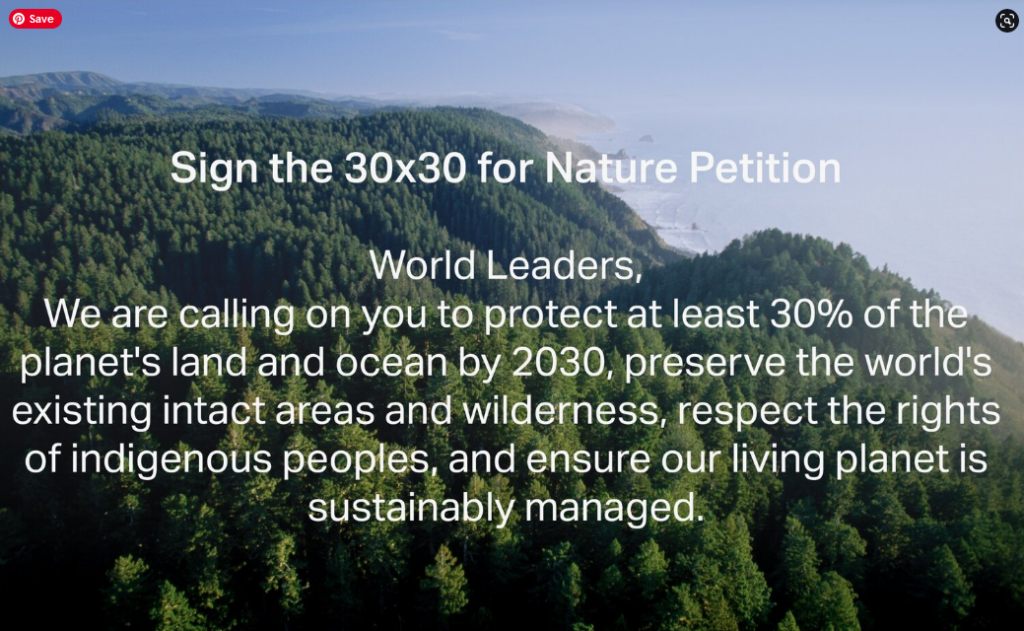
Senator Tom Udall in October 2019 introduced a Senate resolution expressing the need for the federal government to establish the “30 by 30” goal making science the foundation of conservation decisions, sequestering carbon and greenhouse gases in US lands and oceans, and addressing environmental justice issues. The Senate resolution is part of a broader global initiative to reach the 30 by 30 goal. This year, we have an opportunity to get governments worldwide to agree to protect at least 30% of the planet’s land and ocean by 2030, and preserve intact ecosystems and wilderness at the Convention on Biodiversity COP15 Summit in 2021.
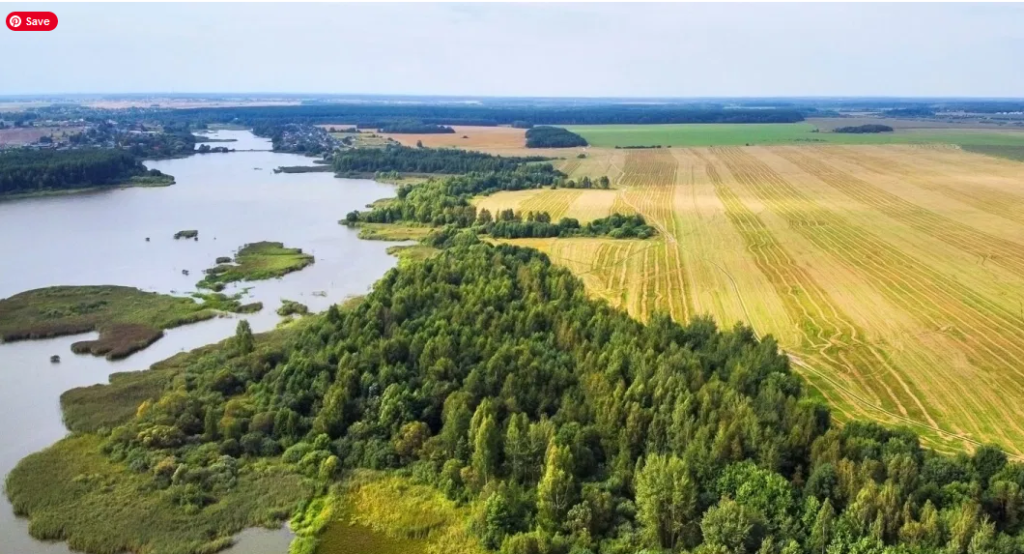
Among the many goals in President Biden’s climate change agenda, protecting 30 percent of U.S. lands and ocean territories by 2030 is among the most ambitious. “Protecting 30 percent of America’s natural areas will help stabilize the climate, protect biodiversity, and give plants and wildlife a chance to adapt to the warming already baked into our current climate.” And among the most complex. The administration initiative is likely to face political headwinds in a divided government. Nevertheless, achieving the “30 by 30” goal could be a critical marker on the road toward a carbon-free future. The reason: Natural landscapes and seascapes are powerful carbon sinks, pulling CO2 from the atmosphere and storing carbon in the soil, grasses, shrubs, and trees, coral reefs, seagrasses, and ocean floor sediments.
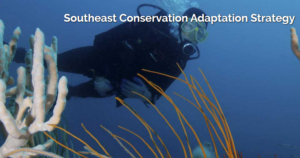
The Southeast Conservation Adaptation Strategy is harnessing the collective action of fifteen southeastern states and Puerto Rico. Using geospatial data and analysis, they are creating the Conservation Blueprint which crosses jurisdictional boundaries and has brought in $30+ million to restore over 75,000 acres. So far, more than 1,700 people from 500 different organizations have actively participated in developing the Southeast Blueprint. Over 240 people from more than 100 organizations have used or are using the Blueprint in their work. She suggests we do more to emulate this ‘living spatial planning model’ across the country and bridge the power of science and people. In order for conservation relationships to work, they need to be durable, nonpartisan, and consult people in communities to engage in ways they want to be involved.
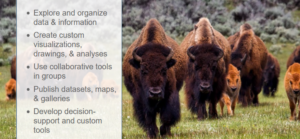
Ever heard of DataBasin? It’s a science-based mapping and analysis platform that allows people to view and analyze geospatial conservation data, collaborate with colleagues, and generate custom analyses and summary reports of data.
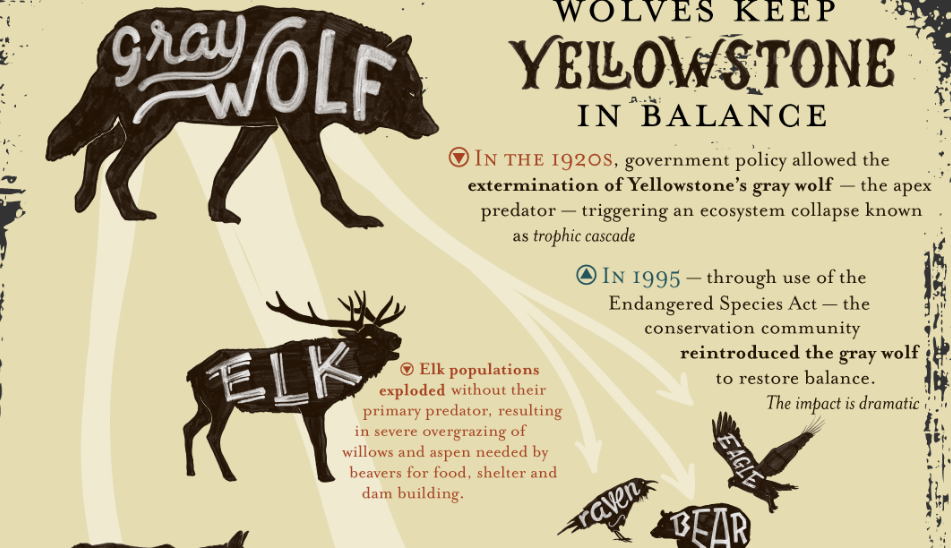
In the 1920s, government policy allowed the extermination of Yellowstone’s gray wolf — the apex predator — which triggered an ecosystem collapse. In 1995 — through use of the Endangered Species Act — the conservation community reintroduced the gray wolf to restore balance. The impact was dramatic.
- Elk populations exploded without wolves as their primary predator, resulting in severe overgrazing of willows and aspen. These trees are critical to beavers for food, shelter, and dam building.
- Various scavenger species suffered without year-round wolf kills to feed on.
- Beavers virtually disappeared in the northern range of Yellowstone. Dams disintegrated, turning marshy ponds into streams. Massive loss of mature willows and aspens. Heavy stream erosion. Many plant and animal species were affected.
- Without wolves, the coyote became an apex predator, driving down populations of pronghorn antelope, red fox, and rodents, and birds that prey on small animals.
- As the wolf returns, coyote numbers drop by half, allowing antelope, rodent, and fox populations to increase.
- After wolf reintroduction in the northern range, elk numbers drop and beaver colonies increase from 1 to 12. Insects, songbirds, fish, and amphibians thrive.
- Today, biodiversity is enriched and scavenger species reap the benefits of regular, wolf-supplied meals.
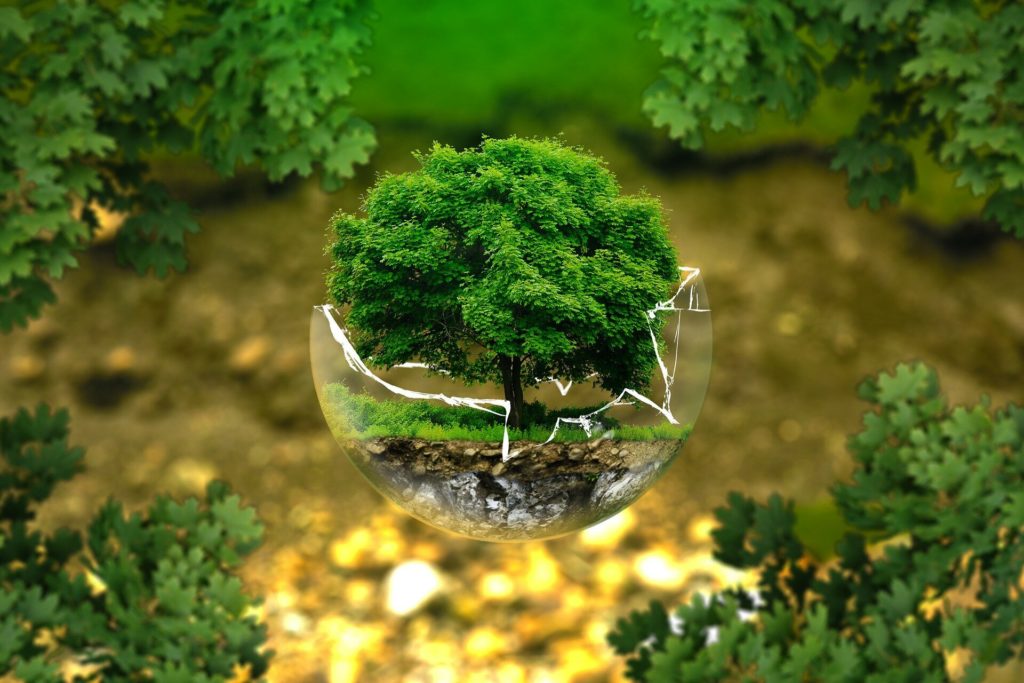
The Chesapeake Conservancy as an example of a partnership that brought together 80 conservation partners across the watershed. Their model of participation and open access allowed the partnership to fit in a multitude of priorities and move forward on multi-benefit conservation. The Open Space Institute spearheading capital campaigns, land acquisitions, and park infrastructure projects. Nature’s Network focuses on connecting conserved lands and uniting stakeholders around common goals for sustaining natural and cultural resources.
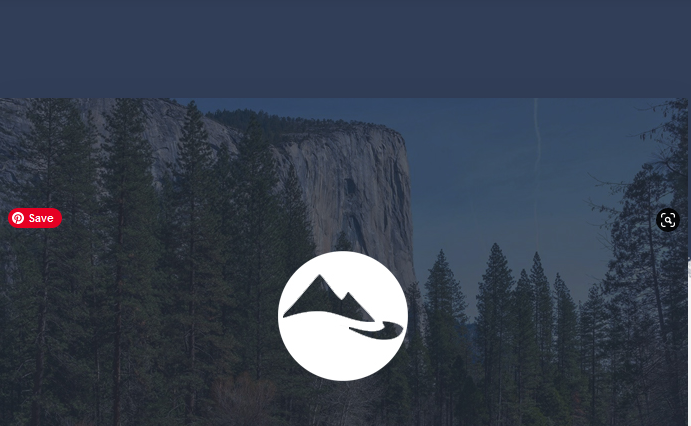
The Center for Landscape Conservation pursues specific, targeted actions to further the practice, policy, and performance of landscape conservation. Their cross-border, collaborative conservation is a vital approach to sustain nature, culture, and community. View their recent virtual policy forums have explored key issues and conversations happening in conservation today with subject matter experts and national leaders. Here are a few of the topics: The Future of Landscape Conservation, Cultivating Landowner Engagement, Pathways to a Just and Equitable Future, Investments in Science and Networks for Biodiversity, Climate, and Cultural Conservation, and Indigenous Leadership and Perspectives.